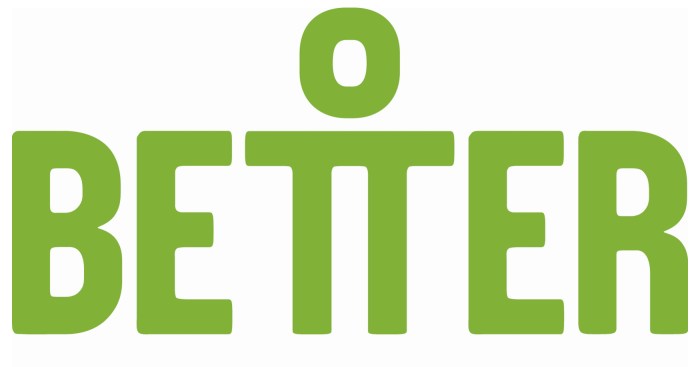Top 8 effective ways to quit coffee painlessly, a comprehensive guide to navigate the often challenging journey of kicking your coffee habit. This guide provides practical strategies, from understanding withdrawal symptoms to long-term lifestyle adjustments, ensuring a smoother transition and a happier, caffeine-free you.
This in-depth exploration covers everything from gradual reduction techniques and alternative beverages to lifestyle changes and support systems. We’ll dive into the science behind coffee withdrawal, explore various methods for managing cravings, and equip you with the knowledge and tools to achieve your goal successfully. The journey to a coffee-free lifestyle is achievable with the right approach.
Understanding Coffee Withdrawal Symptoms

Quitting coffee, while beneficial for long-term health, can be challenging due to the body’s physiological adaptation to its regular consumption. Understanding the potential withdrawal symptoms empowers individuals to navigate this transition more effectively and confidently. This section delves into the various physical and psychological effects of coffee withdrawal, offering insights into the underlying mechanisms and practical strategies for managing them.
Common Coffee Withdrawal Symptoms
Coffee withdrawal symptoms manifest as the body adjusts to the absence of caffeine. These symptoms are often temporary and typically subside within a few days to a week as the body adapts. Common physical symptoms include headaches, fatigue, difficulty concentrating, and mood changes.
Categorization of Withdrawal Symptoms
For a personalized approach to managing coffee withdrawal, categorizing symptoms based on their severity and duration is crucial. This allows individuals to anticipate and address their specific needs more effectively. Symptoms can be broadly grouped into physical and psychological categories.
Physical Symptoms
Physical symptoms often arise due to the body’s reliance on caffeine’s stimulating effects. These effects include increased alertness, enhanced focus, and improved mood. When caffeine is removed, the body must adjust to this change, leading to temporary discomfort.
| Symptom | Description | Severity (mild/moderate/severe) | Duration |
|---|---|---|---|
| Headache | A throbbing or aching sensation in the head, often localized to the temples or forehead. | Mild to Moderate | 1-72 hours |
| Fatigue | Feeling unusually tired, lethargic, or lacking energy. | Mild to Moderate | 1-3 days |
| Difficulty Concentrating | Reduced ability to focus, maintain attention, or process information. | Mild to Moderate | 1-3 days |
| Irritability | Increased feelings of frustration, anger, or impatience. | Mild to Moderate | 1-3 days |
| Mood Swings | Fluctuations in emotional state, from feeling low or sad to overly optimistic or euphoric. | Mild to Moderate | 1-7 days |
| Nausea | An unpleasant sensation in the stomach often accompanied by a urge to vomit. | Mild to Moderate | 1-3 days |
| Muscle Aches | Painful sensations in muscles, often accompanied by stiffness. | Mild to Moderate | 1-3 days |
| Insomnia | Difficulty falling asleep or staying asleep. | Mild to Moderate | 1-3 days |
Psychological Symptoms
Psychological symptoms, while often less noticeable physically, can significantly impact daily functioning. These symptoms reflect the body’s adjustment to the absence of caffeine’s effects on the central nervous system.
| Symptom | Description | Severity (mild/moderate/severe) | Duration |
|---|---|---|---|
| Anxiety | Feelings of worry, nervousness, or unease. | Mild to Moderate | 1-7 days |
| Depressed Mood | A pervasive feeling of sadness, hopelessness, or loss of interest. | Mild to Moderate | 1-7 days |
| Confusion | Difficulty thinking clearly, remembering things, or understanding information. | Mild to Moderate | 1-3 days |
| Restlessness | A feeling of unease or inability to relax, often accompanied by fidgeting or agitation. | Mild to Moderate | 1-3 days |
Gradual Reduction Strategies
Quitting coffee abruptly can trigger unpleasant withdrawal symptoms. A gradual reduction strategy, however, allows your body to adjust to the decreasing caffeine levels, minimizing discomfort. This approach prioritizes your well-being by easing the transition and making the process more manageable.
Careful and consistent reduction is key to a smooth transition. By gradually decreasing your coffee intake, you’ll lessen the intensity of withdrawal symptoms and improve your overall experience. This method empowers you to make a positive change without feeling overwhelmed.
Daily Reduction Schedules
Developing a personalized daily reduction schedule is crucial for a smooth transition. Start by assessing your current coffee consumption. Begin with a realistic reduction goal, such as decreasing your daily intake by one cup. Consistency is vital; stick to your schedule as closely as possible to avoid setbacks.
- Example Schedule 1: Reduce your daily coffee intake by 1 cup per week. If you currently consume 4 cups daily, week 1 would be 3 cups, week 2 would be 2 cups, and so on.
- Example Schedule 2: Reduce your daily coffee intake by 1/2 cup per week. This method is suitable for those who consume larger amounts of coffee. For instance, if you drink 6 cups daily, week 1 would be 5 1/2 cups, week 2 would be 5 cups, and so on.
Tapering Strategies Comparison
Different tapering strategies can influence the rate of caffeine reduction. A comparison table below Artikels various approaches and their potential impact on withdrawal symptoms.
| Tapering Strategy | Caffeine Reduction per Week | Potential Withdrawal Symptoms | Suitability |
|---|---|---|---|
| 25% Reduction | Reduce by 25% of current intake | Generally milder symptoms | Suitable for most individuals, especially those with a high tolerance |
| 50% Reduction | Reduce by 50% of current intake | Potentially more pronounced symptoms | Might be suitable for those who have a more significant tolerance |
| 75% Reduction | Reduce by 75% of current intake | Likely to cause more intense symptoms | Generally less suitable, might be considered for those with extreme tolerance |
| 100% Reduction (cold turkey) | Stop consumption immediately | Most intense withdrawal symptoms | Not recommended, unless under medical supervision |
Importance of Consistency and Patience
Consistency is paramount in gradual reduction strategies. Irregular reduction schedules can disrupt your body’s adjustment, leading to a more challenging experience. Maintaining a steady pace allows your body to adapt to the decreasing caffeine levels, minimizing the severity of withdrawal symptoms.
Ever wanted to kick that coffee habit for good? Top 8 effective ways to quit coffee painlessly are surprisingly achievable. It’s a big step, and often the first hurdle to overcome in a major life shift. In fact, tackling this can be just one of the 6 things you can turn your life around with, as explored in more detail in this insightful article 6 things you can turn your life around.
These methods, from gradual reduction to herbal alternatives, can make the transition smoother. Ultimately, you’ll feel better knowing you’ve taken control of your well-being, and these tips will help.
Patience is equally important. The reduction process may take several weeks or months, depending on individual factors such as tolerance levels. Be patient with yourself, celebrate small victories, and avoid getting discouraged by temporary setbacks.
Meal Replacement Strategies
Implementing meal replacement strategies can aid in the transition and mitigate potential nutrient deficiencies. As you reduce coffee intake, you may notice subtle changes in your energy levels. Substituting coffee breaks with healthy meal replacements can help maintain a balanced diet and potentially counter any energy dips.
- Protein-rich snacks: Incorporate protein-rich snacks between meals to maintain stable blood sugar levels and support energy levels. Examples include Greek yogurt, nuts, and protein bars.
- Hydration: Increased water intake can help alleviate potential headaches or fatigue associated with reduced caffeine consumption. Carry a water bottle with you throughout the day.
- Healthy alternatives: Explore healthy alternatives for your coffee breaks, such as herbal teas, fruit infusions, or vegetable juices.
Alternative Beverages and Substitutions

Beyond simply reducing coffee intake, exploring alternative beverages is crucial for a smooth transition. These alternatives offer a chance to satisfy cravings and adapt existing routines, minimizing the discomfort often associated with quitting. The right substitutes can even introduce new flavors and health benefits into your daily routine.
Suitable Alternative Beverages
A wide array of beverages can effectively replace coffee, catering to diverse tastes and preferences. These alternatives range from familiar options like herbal teas to more exotic choices, allowing you to experiment and discover new favorites.
- Herbal Teas: A broad category, herbal teas offer a vast array of flavors and potential health benefits. Chamomile, peppermint, and ginger teas are popular choices, known for their calming and digestive properties. Experiment with different blends to find those that best complement your palate. Their taste profiles generally differ significantly from coffee, often presenting a gentler, more nuanced experience.
- Decaf Coffee: A common choice, decaf coffee offers a familiar experience, albeit without the caffeine. The taste and aroma can vary depending on the processing method used. Consider trying various decaf brands to find one that best matches your preferences.
- Caffeine-Free Coffee Alternatives: Many coffee shops and grocery stores now offer a range of caffeine-free beverages. These alternatives may contain substitutes for coffee beans or utilize different preparation methods, resulting in unique tastes and textures. Some options may include roasted grains or seeds that provide a similar experience to coffee without the caffeine.
- Rooibos Tea: Known for its naturally sweet and earthy flavor, rooibos tea is a caffeine-free alternative that can be enjoyed hot or cold. It offers a unique taste experience, appealing to those seeking a beverage distinct from traditional coffee or tea.
- Matcha: A powdered green tea, matcha offers a rich, earthy flavor and a vibrant green color. It can be enjoyed as a hot beverage or incorporated into smoothies and desserts. The subtle, nuanced flavor profile of matcha presents a delightful alternative to coffee, particularly for those interested in a more intense tea experience.
Comparing Taste, Aroma, and Potential Health Benefits
Choosing the right alternative depends on personal preferences. Consider the nuances of taste, aroma, and potential health advantages. For example, herbal teas often offer calming properties, while decaf coffee maintains a familiar taste.
| Beverage | Taste | Aroma | Potential Health Benefits |
|---|---|---|---|
| Herbal Teas | Varied, from mild to strong | Mild to intense, depending on the blend | Calming, digestive, antioxidant properties |
| Decaf Coffee | Similar to regular coffee, but often with a slightly different profile | Similar to regular coffee, but with reduced intensity | Potential antioxidants |
| Caffeine-Free Alternatives | Widely varying | Widely varying | Potential health benefits depend on the specific ingredients |
| Rooibos Tea | Sweet, earthy | Earthy | Rich in antioxidants |
| Matcha | Earthy, slightly sweet | Earthy, vegetal | Rich in antioxidants, potential energy boost |
Adapting Coffee Rituals
Adapting existing coffee rituals to alternative beverages is essential for a seamless transition. Consider the time of day, the preparation method, and the overall atmosphere associated with your coffee routine.
- Morning Routine: If your morning routine involves brewing coffee and enjoying it with breakfast, try replacing the coffee with a warm herbal tea or a cup of decaf coffee. Maintain the same environment and ritual to ease the transition.
- Afternoon Pick-Me-Up: If your afternoon slump is associated with coffee, explore herbal teas, or caffeine-free alternatives as a satisfying and equally energizing replacement.
- Evening Rituals: Consider replacing evening coffee with a calming herbal tea or a warm cup of rooibos tea to wind down for bed.
Incorporating Alternatives into a Daily Routine
Smoothly incorporating alternatives into your daily routine requires careful planning and consideration. Start by gradually replacing one or two coffee servings with alternative beverages. Gradually increasing the frequency of these alternatives will allow your body and taste buds to adjust.
Lifestyle Adjustments for Support
Giving up coffee isn’t just about changing your beverage; it’s about adjusting your entire routine. This often involves addressing the underlying factors that make coffee a crutch, like stress, poor sleep, or even nutritional deficiencies. By proactively addressing these areas, you’ll significantly reduce the discomfort of withdrawal and enhance your overall well-being during the transition.Lifestyle adjustments are crucial for a smoother transition.
They support the body’s natural healing process while minimizing the negative effects of withdrawal. These adjustments go beyond just choosing decaf; they encompass a holistic approach to wellness.
Adequate Sleep
Sufficient sleep is essential for regulating various bodily functions, including stress hormones and neurotransmitter balance. Chronic sleep deprivation can exacerbate withdrawal symptoms, making the transition more challenging. Aiming for 7-9 hours of quality sleep per night is recommended. Creating a relaxing bedtime routine, such as a warm bath or reading, can significantly improve sleep quality. Consistency is key.
A regular sleep schedule, even on weekends, helps regulate your body’s natural sleep-wake cycle.
Stress Management Techniques
Coffee often becomes a coping mechanism for stress. During withdrawal, the body may experience heightened stress responses. Incorporating stress-reducing activities can alleviate these feelings and aid in the transition. Practicing mindfulness, deep breathing exercises, or engaging in hobbies you enjoy can help manage stress effectively.
Hydration and Nutrition
Maintaining adequate hydration and a balanced diet is crucial during coffee withdrawal. Dehydration can mimic some withdrawal symptoms, such as headaches and fatigue. Drinking plenty of water throughout the day helps flush out toxins and supports overall bodily functions. A balanced diet rich in fruits, vegetables, and lean proteins provides essential nutrients for energy and helps your body adapt to the change.
Consuming foods high in magnesium can also be helpful, as magnesium deficiency can contribute to some withdrawal symptoms.
Increasing Physical Activity
Physical activity releases endorphins, which have mood-boosting effects. Regular exercise can help manage stress and improve sleep quality, further supporting the transition process. Even moderate-intensity activities like brisk walking or yoga can be beneficial. Start gradually and listen to your body. Consistency is more important than intensity at the beginning.
Stress-Reducing Activities
Consistent practice of stress-reducing activities is key for a smoother transition. These activities help regulate stress hormones, improve mood, and promote relaxation.
- Mindfulness Meditation: Focuses on the present moment without judgment. Even a few minutes daily can significantly reduce stress.
- Yoga: Combines physical postures, breathing techniques, and meditation. This practice helps calm the mind and body.
- Deep Breathing Exercises: Simple techniques for slowing down your breath and calming the nervous system. These exercises can be done anywhere.
- Progressive Muscle Relaxation: Involves tensing and releasing different muscle groups. This technique can help relieve physical tension and reduce stress.
- Spending Time in Nature: Exposure to nature has been shown to lower stress hormones and improve mood. A walk in a park or simply sitting under a tree can be beneficial.
- Listening to Calming Music: Music can have a profound effect on mood and stress levels. Choose music that is relaxing and soothing.
Supplementing for Comfort: Top 8 Effective Ways To Quit Coffee Painlessly
Giving up coffee can be tough, and withdrawal symptoms can range from mild headaches to more significant discomfort. Fortunately, certain supplements can help ease these symptoms and support your transition. This section delves into the potential benefits and drawbacks of various supplements commonly used for coffee withdrawal relief, providing a well-rounded perspective for informed decision-making.Supplementing your diet with specific nutrients can effectively address some of the common symptoms experienced during coffee withdrawal.
By understanding the potential benefits and drawbacks of different options, you can make an informed choice that aligns with your individual needs and preferences. Remember that supplements are not a replacement for professional medical advice. Always consult with your doctor before starting any new supplement regimen, especially if you have underlying health conditions.
B Vitamins
B vitamins play a crucial role in energy production and nerve function. Deficiencies in these vitamins can contribute to fatigue and irritability, common symptoms of coffee withdrawal. Supplementing with B vitamins, particularly B6, B12, and folate, may help alleviate these symptoms. B vitamins are water-soluble, meaning your body doesn’t store them. Regular intake is essential for optimal function.
Ever wondered about those top 8 effective ways to quit coffee painlessly? Understanding why you feel exhausted is key. Often, that persistent fatigue is a sign of caffeine withdrawal, which is why exploring the root causes of your exhaustion, like those detailed in why do i feel exhausted , is crucial before diving into the specifics of quitting coffee.
Thankfully, these top 8 methods can guide you through the process smoothly and help you overcome any related discomfort.
Magnesium
Magnesium is a crucial mineral involved in hundreds of bodily processes, including muscle and nerve function. Caffeine can deplete magnesium stores, potentially contributing to muscle cramps, headaches, and irritability during withdrawal. Magnesium supplementation may help replenish these stores and alleviate associated symptoms. Different forms of magnesium exist, and absorption can vary. Consult your doctor for the best form and dosage for your specific needs.
Other Natural Remedies
Other natural remedies, such as Rhodiola Rosea, are sometimes suggested for supporting the body during withdrawal. Rhodiola Rosea is an adaptogen, meaning it may help the body adapt to stress. Some users report that it helps to reduce stress and anxiety related to coffee withdrawal. Research into the effectiveness of these remedies is ongoing, and more studies are needed to confirm their efficacy.
Supplement Comparison
| Supplement | Benefit | Drawbacks | Dosage |
|---|---|---|---|
| B Vitamins (B6, B12, Folate) | Support energy production, nerve function, potentially reduce fatigue and irritability. | Generally safe, but high doses may cause digestive upset in some individuals. | Consult a healthcare professional for personalized dosage recommendations. |
| Magnesium | Support muscle and nerve function, potentially reduce cramps, headaches, and irritability. | Different forms have varying absorption rates. Some individuals may experience digestive issues. | Consult a healthcare professional for personalized dosage recommendations. |
| Rhodiola Rosea | Potentially reduce stress and anxiety related to withdrawal. | Limited research on long-term effects. May interact with certain medications. | Consult a healthcare professional for personalized dosage recommendations. |
Mindfulness and Emotional Support
Quitting coffee, while beneficial for long-term health, can trigger a range of emotional responses. These responses, from irritability to anxiety, can significantly impact the success of your journey. Understanding and addressing these emotional challenges is crucial for a smooth and painless transition. Mindfulness practices and emotional support strategies can effectively manage these feelings and help you stay motivated throughout the process.Mindfulness, in this context, involves paying attention to the present moment without judgment.
By focusing on your thoughts, feelings, and physical sensations without getting carried away by them, you can gain a greater sense of control over your emotional responses to withdrawal symptoms. This, in turn, reduces the intensity of cravings and emotional distress.
Ever wanted to ditch the daily java jolt? My top 8 effective ways to quit coffee painlessly are surprisingly simple. But, beyond the physical benefits of a caffeine-free life, cultivating a calm demeanor, like those described in the article about 10 signs good tempered people , might actually play a role in the process. These methods will help you embrace a less jittery, more serene you, making the transition to a coffee-free lifestyle much smoother.
Stress-Reduction Techniques
Effective stress-reduction techniques can significantly mitigate the emotional challenges associated with coffee withdrawal. These techniques equip you with tools to manage stress proactively, making the transition smoother.
- Deep Breathing Exercises: Slow, deep breaths can calm the nervous system, reducing anxiety and promoting relaxation. Incorporate these into your daily routine, especially during moments of heightened stress or craving.
- Mindful Movement: Engaging in gentle activities like yoga, tai chi, or stretching can release tension and promote a sense of well-being. The physical movement combined with mindfulness fosters a sense of calm.
- Progressive Muscle Relaxation: This technique involves tensing and releasing different muscle groups in your body, systematically reducing physical tension and promoting relaxation. Regular practice can be highly effective in managing anxiety and stress.
- Grounding Techniques: Grounding techniques, such as focusing on the five senses (sight, sound, smell, touch, taste), can help you connect with the present moment and reduce feelings of anxiety or overwhelm. Focusing on the tangible elements of your environment anchors you to the present.
Positive Self-Talk and Affirmations
Positive self-talk and affirmations play a significant role in maintaining motivation during withdrawal. Reinforcing positive thoughts and actions strengthens your resolve and helps you navigate challenges with greater resilience.
- Focusing on Progress: Instead of dwelling on the discomfort of withdrawal, acknowledge and appreciate the progress you’ve made. For example, “I am successfully managing my cravings today” or “I am stronger than I think.” This encourages a positive outlook.
- Acknowledging Strengths: Remind yourself of your strengths and capabilities. “I am capable of overcoming this challenge,” or “I am resourceful and resilient.” This builds confidence and reinforces your ability to succeed.
- Visualizing Success: Visualize yourself successfully completing the withdrawal process. This visualization can enhance your motivation and help you stay focused on your goals.
Seeking Support, Top 8 effective ways to quit coffee painlessly
Support from friends, family, or support groups is essential for managing the emotional aspects of coffee withdrawal. Sharing your experiences and connecting with others facing similar challenges can provide invaluable encouragement and understanding.
- Social Support Systems: Lean on your support network for encouragement and understanding. Sharing your journey with loved ones can create a sense of community and accountability.
- Support Groups: Joining a support group dedicated to quitting coffee can offer valuable insights and emotional support from others who are experiencing similar challenges. Sharing experiences with others can validate your feelings and offer helpful strategies.
- Professional Guidance: If needed, consider seeking guidance from a therapist or counselor to address underlying emotional issues that might be contributing to the withdrawal process. Professional support can provide tailored guidance for managing stress and emotional responses.
Monitoring Progress and Adjustments
Quitting coffee, while beneficial, can be a bumpy ride. Monitoring your progress and adjusting your plan as needed is crucial for a smooth transition and a successful outcome. This involves not only tracking symptoms but also understanding how your body and mind react to the changes. Being proactive and flexible are key to navigating potential challenges and achieving your goal.Tracking your progress effectively allows you to identify patterns, anticipate potential setbacks, and make necessary adjustments to your plan.
This proactive approach is vital for a comfortable and successful transition.
Tracking Symptoms and Mood
Regular self-assessment is essential for monitoring your progress and adjusting your plan. This involves paying attention to physical symptoms, emotional responses, and any changes in your daily routine. By meticulously recording these aspects, you gain a deeper understanding of how your body reacts to the reduction in caffeine intake. This detailed insight empowers you to make informed decisions and fine-tune your plan.
- Physical Symptoms Log: This log should include details about any physical discomfort, such as headaches, fatigue, or irritability. Note the intensity and duration of each symptom. This allows you to observe potential trends and adjust your reduction strategy accordingly.
- Mood Tracker: Document your mood throughout the day. Use a scale (e.g., 1-10, where 1 is very low and 10 is very high) to quantify your emotional state. Identify potential correlations between caffeine withdrawal and mood fluctuations. Consider factors such as stress, sleep quality, and other lifestyle aspects that may influence your mood.
- Sleep Diary: Record your sleep patterns, including the time you go to bed, the time you wake up, and the quality of your sleep. Poor sleep can exacerbate withdrawal symptoms, so monitoring this aspect is important. Note any changes in sleep quality related to your caffeine reduction plan.
Adjusting the Reduction Plan
Flexibility is paramount in any reduction plan. Your body and mind will respond uniquely to the process. It’s crucial to adapt the plan based on your personal experience. This involves evaluating your progress, identifying any emerging challenges, and modifying your strategy as needed.
- Adjusting the Reduction Rate: If withdrawal symptoms are severe, slow down the reduction rate. If you feel you’re progressing well, consider slightly accelerating the reduction process. The key is to maintain a comfortable pace that allows your body to adapt.
- Adding Support Strategies: Consider incorporating additional strategies like increasing your intake of water, getting more exercise, or practicing relaxation techniques to alleviate symptoms. This ensures you’re comprehensively addressing the process.
- Seeking Professional Guidance: If you’re struggling to manage withdrawal symptoms, consult with a healthcare professional or a registered dietitian. This is particularly important for individuals with underlying health conditions. Professional guidance can provide tailored support.
Progress Monitoring Table
This table is a template for tracking your progress. Use it to record your daily experiences during the coffee reduction process.
| Day | Symptoms | Adjustments Made | Mood |
|---|---|---|---|
| 1 | Headache, mild fatigue | Increased water intake, took a short walk | 6 |
| 2 | Headache, irritability, difficulty concentrating | Slowed reduction rate, added magnesium supplement | 4 |
| 3 | Headache, fatigue | Continued magnesium supplement, ensured sufficient sleep | 5 |
| 4 | Improved energy levels | Maintained current reduction rate | 7 |
Long-Term Strategies for Maintaining a Coffee-Free Lifestyle
Congratulations on taking the leap to a coffee-free life! Now, the real challenge begins: maintaining this new routine long-term. This involves more than just initial withdrawal; it’s about cultivating lasting healthy habits that integrate seamlessly into your daily life. Building a sustainable lifestyle change often hinges on proactive strategies to prevent relapses and keep your motivation high.Maintaining a coffee-free lifestyle is a journey of conscious choices and consistent effort.
It’s about understanding your triggers, building new routines, and embracing a healthier lifestyle that supports your well-being without relying on coffee. This involves acknowledging that maintaining this change is not just about avoiding coffee, but about fostering a new, balanced approach to daily life.
Identifying and Managing Coffee Cravings
Coffee cravings often stem from established habits and associations. Recognizing these triggers is crucial for managing them effectively. Common triggers include specific times of day (morning routine), locations (office, favorite café), or social situations (meetings, gatherings). Keeping a journal can help you pinpoint these triggers. Once identified, you can create alternative strategies to cope with them.
For example, if your morning coffee is associated with your morning routine, replace it with a new activity, such as a brisk walk or reading a book. If the craving arises at work, carry a healthy snack or herbal tea to satisfy the urge.
The Power of Balanced Diet and Regular Exercise
A balanced diet rich in fruits, vegetables, and whole grains provides sustained energy levels, reducing the need for caffeine. Similarly, regular exercise releases endorphins, which naturally combat stress and elevate mood. A balanced diet and regular exercise can also improve sleep quality, which is often disrupted during coffee withdrawal. These improvements are often cited as key components in successful long-term lifestyle changes.
For example, a diet rich in complex carbohydrates and lean protein can provide steady energy release throughout the day, mitigating the need for a caffeine-fueled boost.
Establishing Healthy Habits and Routines
Developing new healthy habits and routines takes time and effort. Begin by incorporating small, manageable changes into your daily schedule. For example, replacing your morning coffee with a glass of water and a healthy breakfast. Over time, these small changes can create a new routine that becomes ingrained in your lifestyle. Consider integrating mindfulness practices, such as meditation or yoga, to manage stress and enhance emotional well-being.
This will help maintain the new routine in a sustainable way. Experiment with different activities until you find those that work best for you and fit into your daily schedule.
Maintaining Motivation and Support
Staying motivated throughout your journey is vital. Find a support system, whether it’s a friend, family member, or support group. Celebrating small victories along the way, and acknowledging challenges, can keep you motivated and focused on your goals. Remind yourself of the reasons behind your decision to quit coffee. This could be improved sleep, enhanced energy levels, or better overall health.
Regularly reflecting on these benefits can strengthen your resolve and keep you motivated.
Wrap-Up
In conclusion, quitting coffee doesn’t have to be a painful experience. By understanding the science behind withdrawal, employing gradual reduction strategies, exploring alternative beverages, and making supportive lifestyle adjustments, you can successfully transition to a coffee-free life. This guide provides a roadmap for managing withdrawal symptoms, coping with cravings, and maintaining a healthy, caffeine-free lifestyle long-term. Remember, consistency and self-care are key! You’ve got this!











